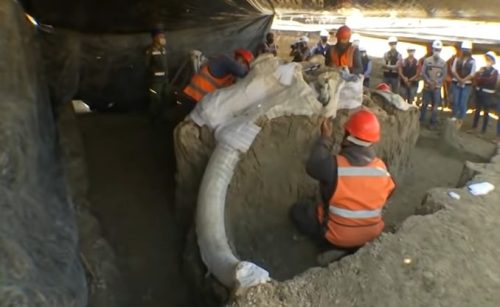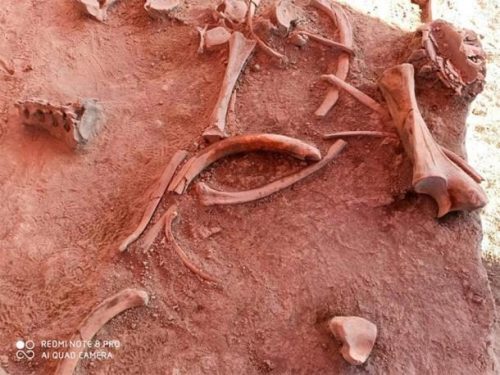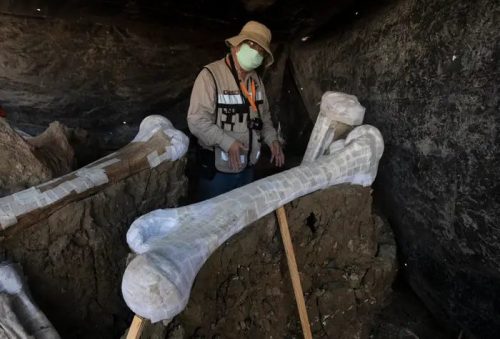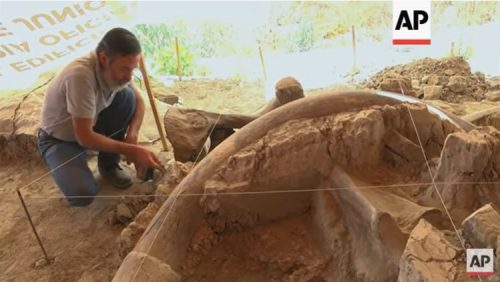
In the bustling heart of Mexico City, an astonishing discovery sent shockwaves through the world of paleontology. In 2019, construction workers stumbled upon the mammoth remains buried beneath the city’s streets, offering a glimpse into the distant past. This remarkable find not only captivated the public’s imagination but also presented a goldmine of paleontological insights. In this article, we delve into the paleontological significance of the Mexico City mammoth skeleton, shedding light on its importance in understanding Earth’s prehistoric history.
Uncovering the Mexico City Mammoth
The Mexico City mammoth is a time capsule to the Pleistocene epoch, dating back thousands of years. This well-preserved skeleton provides a rare opportunity for paleontologists to study the anatomy, behavior, and ecology of these magnificent creatures. Here are some key aspects of its paleontological significance:
Species Identification: Initial studies confirmed that the Mexico City mammoth belongs to the Columbian mammoth species (Mammuthus columbi). This identification is crucial in reconstructing the distribution and migration patterns of mammoths in the Americas during the Pleistocene.

Climate Insights: The preservation of the mammoth’s remains, along with the surrounding sediment, offers clues about the climate and environmental conditions of the time. Analysis of pollen and plant remains can provide a snapshot of the ancient vegetation and help researchers understand the mammoth’s diet.
Taphonomy Studies: Taphonomy, the study of how fossils are formed and preserved, is enhanced by the exceptional preservation of the Mexico City mammoth. It allows scientists to gain insights into how mammoths died and the processes that led to their preservation.
Human Interaction: Evidence of human-made tools and cut marks on mammoth bones raise questions about human-mammoth interactions. Did early humans hunt mammoths or scavenge their remains? This discovery provides a unique opportunity to investigate the relationship between ancient humans and megafauna.
Paleoecological Data: The Mexico City mammoth is not an isolated find. It contributes to the growing body of evidence on the Pleistocene megafauna and their role in ecosystems. Studying this skeleton helps scientists understand the mammoth’s place in the food web and its ecological impact.

Evolutionary Insights: By comparing the Mexico City mammoth with other mammoth finds worldwide, researchers can refine our understanding of mammoth evolution and adaptation over time. This information can also shed light on the factors that led to their eventual extinction.
Preservation Challenges and Future Research
Preserving the Mexico City mammoth is a delicate task, given its location in an urban environment. Ensuring the integrity of the skeleton for future generations of scientists is paramount. Strategies for excavation, conservation, and public engagement must be carefully considered.
Future research on the Mexico City mammoth promises to yield even more valuable insights into our planet’s history. DNA analysis may provide information about the mammoth’s genetic makeup, potentially contributing to efforts aimed at de-extinction or genetic conservation of closely related species.

The discovery of the Mexico City mammoth skeleton is a testament to the hidden wonders that lie beneath our cities. Its paleontological significance extends beyond mere curiosity; it offers a unique window into the past, enabling scientists to unravel the mysteries of Earth’s ancient ecosystems and the creatures that once roamed them. As research on this incredible find continues, we can look forward to even more revelations about our planet’s rich and complex history.






